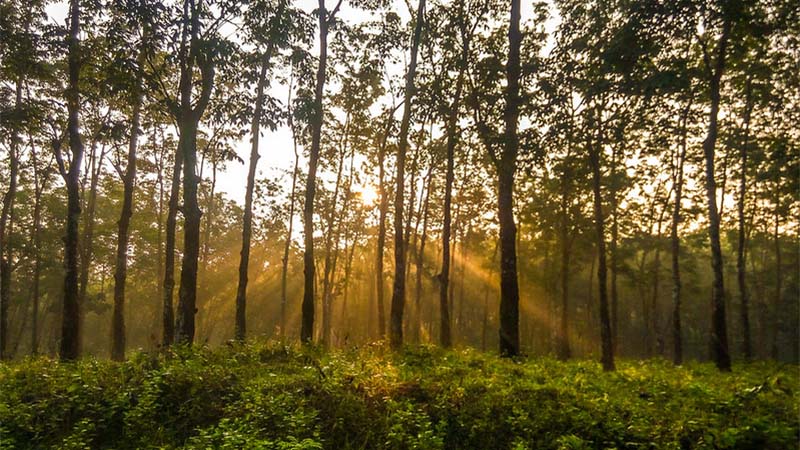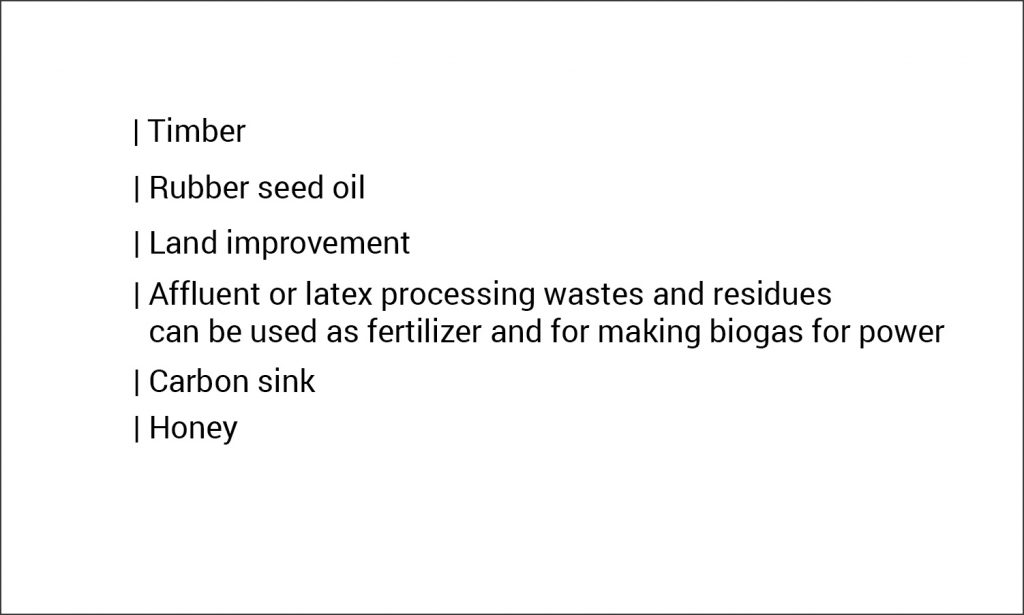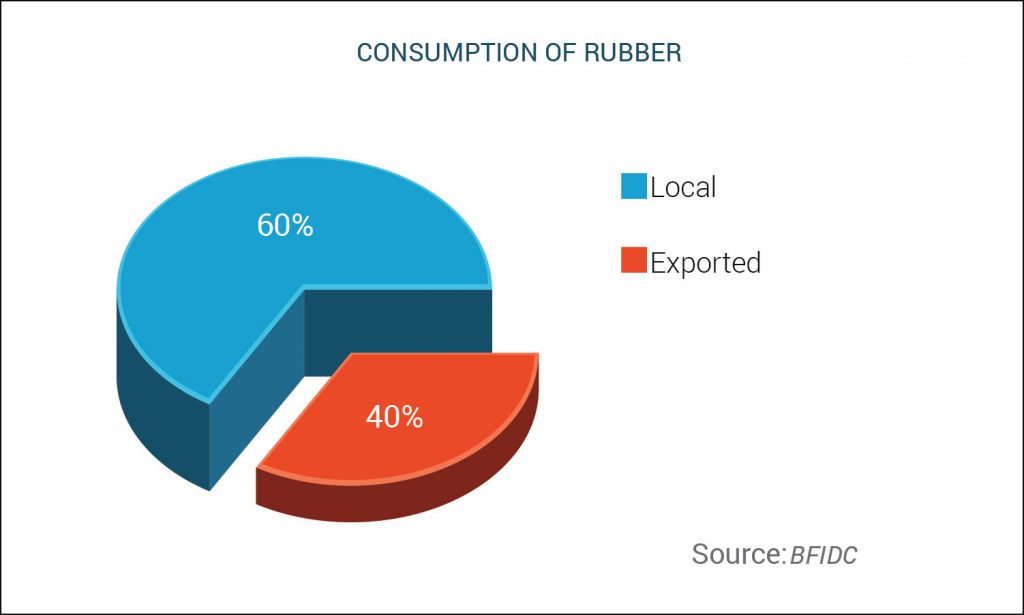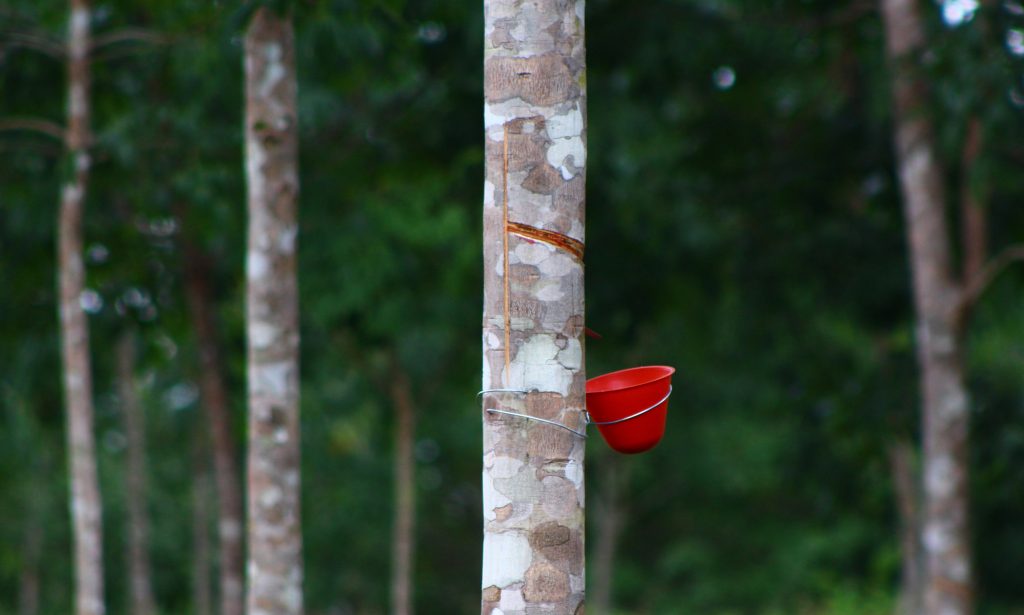GET IN TOUCH
- Please wait...

Bangladesh, being a land of agriculture, tea plantations, and fruit cultivation, could prosper in the plantation of rubber – a relatively new industry in Bangladesh when compared to other countries since the climate provides a very appropriate base for producing rubber in the country. However, though the government has been encouraging plantations in the hilly areas since 1980 due to this favorable condition, so far, only about 45,000 acres of land have been allotted to the BFIDC and 32,500 acres to private owners for rubber plantations. There is also a myriad of other factors that determine the growth of this industry. It is the primary raw material for a list of industries. Rubber trees can absorb carbon three times more than any other tree- a tool that can be used to earn foreign currency worth billions of dollars from the Global Carbon Trading and Environmental Fund. As more and more countries swap the production of rubber with palm oil, it leaves a huge void that prospective Bangladeshi producers can fill.
Being a primary industrial input for many businesses, rubber plays a substantial role in deciding the profitability of the following industries:
Apart from its more traditional uses, the natural product can also be used in various other ways:

According to BFIDC, in 2012, Bangladesh produced 24,000 tons of rubber, out of which 60 percent (worth BDT 334 crore) was consumed by the local market, and the rest 9600 tons were exported for a sum of BDT 220 crore.

Not only that, the Rubber industry has been playing a vital role in creating additional employment opportunities for rural people. As per industry experts, as many as ten people are employed in every 25 acres of rubber land.
According to the President of The Bangladesh Rubber Garden Owners Association (BRGOA), countries such as China, Malaysia, India, Turkey, and Pakistan are showing much penchant for Bangladeshi raw and processed rubber due to its esteemed quality.
According to the Export Promotion Bureau (EPB), from July 2013 to January 2014, the rubber export revenue was USD 10.06 million, whereas the expected figures were USD 5.71 million.
The imposition of the 15% VAT by the government, even though all VAT has been withdrawn from agro-based products, is being seen as the principal impediment to the sector’s potential growth. According to the Bangladesh Rubber Garden Owners Association (BRGOA), the availability of expertise in the field of rubber production is negligible and at the moment, the scope of acquiring soft loans and other finances is also extremely narrow. Only funds worth BDT 162.82 million, at an interest rate of 12%, have been invested by the government during the last 33 years. Adding to the woes is the primitive plantation system, which requires about eight years to extract latex, whereas, it takes half as long in countries like Malaysia. As rubber sells at an all-time high of BDT 350 to BDT 400, the BRGOA believes supplies must rise to meet the burgeoning demands.

According to the Food and Agriculture Organization of the UN (FAO), by 2020, 150,000 acres of land will have to be brought under cultivation to meet the growing worldwide demand for rubber. With a target of reaching 0.1 million metric tons of rubber production by 2020 and 0.2 million MT by 2050, Bangladesh now seeks a proper infrastructure to propel itself towards its desired directions in order to become a key supplier to meet this worldwide huge demand. If more private and public sector investment in research and funding is injected, the BRGOA believes that rubber production in Bangladesh could reach its vastly anticipated statures.
The research for this sector report was conducted by Aseef Zahir, Junior Associate at LightCastle Partners.
Our experts can help you solve your unique challenges
Stay up-to-date with our Thought Leadership and Insights